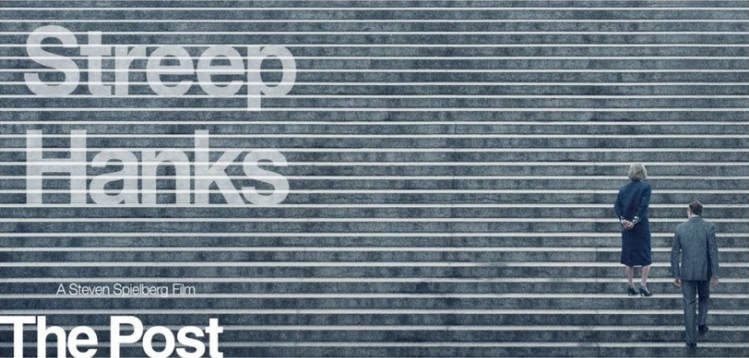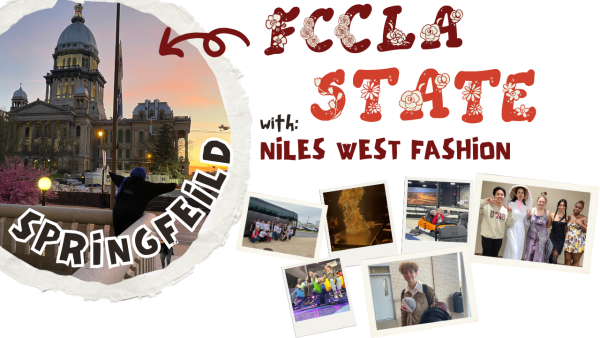The Post or Spotlight 2.0?
Jan 25, 2018
Walking into the crowded AMC theater, I was way too early to the 10:00 show of The Post. I was anticipating more people coming- not a lot, but more than the 13 people I shared the theater with, one of whom was my friend. I bit my tongue, anticipating a pretty poor film, given the number of people who came to watch it. Its zero golden globe wins and subpar opening weekend ties into the movie only making back 37% of it’s budget. However, it had a very high rotten tomatoes score of 88%, and as a history nerd, I tried to come in with a positive outlook.
The plot follows the publishing of the Pentagon Papers in 1971. The Papers were originally published by the New York Times, but this movie follows The Washington Post, which at the time was only a local paper, biting at the heels of the New York Times release. WaPo is eager to release the documents as well, but when the NYT gets sued by the Nixon Administration, the coverage is put to a halt as they panic and try to figure out what choice to make.
Tom Hanks plays the editor in chief of WaPo, Ben Bradley, and Meryl Streep plays the heiress and publisher of the newspaper, Kay Graham. The Washington Post goes public in the stock exchange at the beginning of the film, putting very high stakes on running a controversial story, since investors and stock owners can back out at any second and cause the newspaper to crumble. The choice for Streep comes down to being loyal to the American public and possibly losing everything, or being loyal to her friends, sources and bankers and losing the trust and business of the public. In the end, as history shows us, they run the story despite the cease and desist from the government and help the NYT win the landmark court case New York Times v. United States, which sets a precedent for protections of the first amendment that helps papers like the Niles West News continue to run.
From the perspective of a history nerd, I loved this movie. There are subtleties to appreciate, and the ending had my jaw on the floor. One of my favorite choices was using the actual audio from the recorded phone calls of President Nixon, which I didn’t realize was Nixon’s actual voice until the end of the film. The sudden realization that the reason they never showed the actor playing Nixon was because the actor wasn’t speaking caused my eyes to bug out of my head. At the very ending of the movie, which I won’t spoil, there is an add on that almost caused me to fall out of my chair and something most people with even a slight history knowledge will like.
Despite knowing the ending of the movie, the last 20 minutes of the film had me on the edge of my seat, not wanting to take my eyes off of the tense action. It’s obviously not like a crazy fight or explosion like most of what is considered action, but it was stressful with high pressure and a lot on the line. It kept you on the edge of your seat with bated breath waiting to see what happens next.
My critiques of the movie includes their use of title cards, which is a lazy way to explain a scene to an audience and something I think the director, Steven Spielberg, is above; there are more clever ways to introduce a time and location to an audience besides a glorified slideshow. The cinematography was also sub par. There is a high quantity of tracking shots of speed-walking characters, which are frequently used in newsroom scenes in movies, and they’re overplayed as a way to cue stress in the audience. The camera also moves from a handheld camera to a tripod pretty obviously and it’s very distracting hopping between shaky cam and a still frame several times in one scene. There are obvious high angle shots on the oppressive character and low angle shots on the submissive character, which are pretty basic and a waste of an award winning cinematographer’s skills.
The cinematographer has worked on the movies Schindler’s List and Saving Private Ryan, and that’s clear when you compare how he shot scenes of the Vietnam War in the film compared to office scenes. The shots I liked included some clever ones, like everyone in The Washington Post newsroom reading the New York Times, with WaPo’s logo printed on the glass door being shot through. Another great shot was transferring from the sound of gunshots to the clipping of a helicopter, but aside from those, no particular shot stuck out in my mind.
Aside from nitpicking the cinematography, the film also had a few issues with focus. Streep, despite being presented as a main character, is pretty flat and only in a handful of scenes, with a ham-fisted feminist message that’s very out of place and doesn’t show up until the very end of the movie. It’s an important thing to point out, the fact that it is quite rare for a major corporation to have a woman at the head, but it should be mentioned more tastefully, rather than with an over the top, forced message about girl power at the very end of the film. Her dialogue is just very out of place, such as telling her own daughter her exposition and background, and in the last 30 minutes other characters have to directly explain why Streep’s character is brave, pretty much spelling it out for the audience and leaving little to no room for interpretation.
Aside from my complaints, this is still a very solid movie, and one of my favorites. If you need points for Civics, AP Government, or US History, I recommend seeing this film. It’s informative, entertaining, and some teachers are offering extra credit for seeing it, so there’s no reason not to. I give this movie an 8/10.








